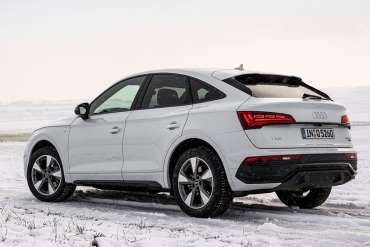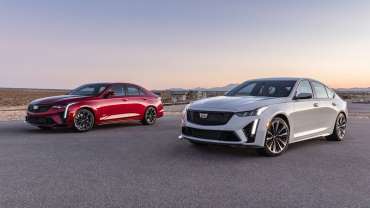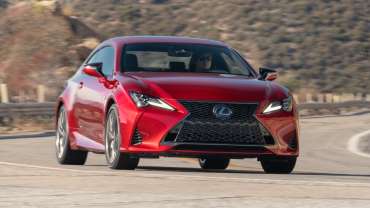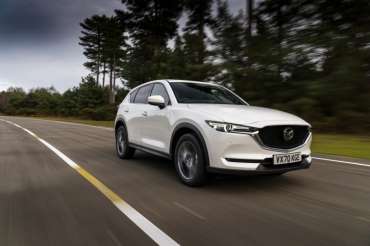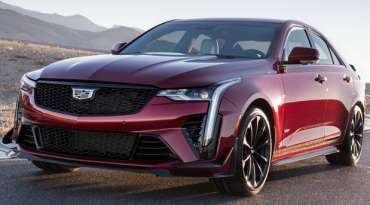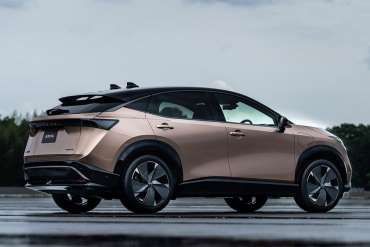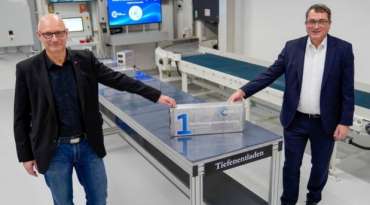
Worldcarblog.com
Audi Q5 Sportback review
Audi has expanded the popular Q5 SUV range with a slightly sportier-looking, low-roofed variant. Predictable this model may be – but with good reason, as the less-bulky profile appeals to buyers previously reluctant to go for the boxy bulk of a traditional SUV
Taking cues from the succesful A5 Sportback, the Q5 Sportback joins the Q3 Sportback and electric-only e-Tron to give Audi customers a choice coupe-SUVs to complement their full-sized sister cars. It's a sensible recipe, too, taking the five-door practicality of the A5 Sportback and adding ground clearance and Quattro all-wheel drive on all but the least powerful model. It takes on the established Mercedes-Benz GLC Coupe, among other less direct competitors.
Just a few centimetres longer than the regular, boxy Q5, the Sportback retains ample room for five with just a small reduction in headroom. A new, optional seating system – rear seat bench plus – introduces a sliding bench and multi-position reclining backrest.
What's new about the Audi Q5 Sportback?
Although much of the Q5 Sportback's engineering and technology is shared with the regular Q5, no-one buys a sporty-looking SUV like this hoping they won't be noticed. Audi's drawing attention to the new model with a new lighting technology, OLED rear lights.
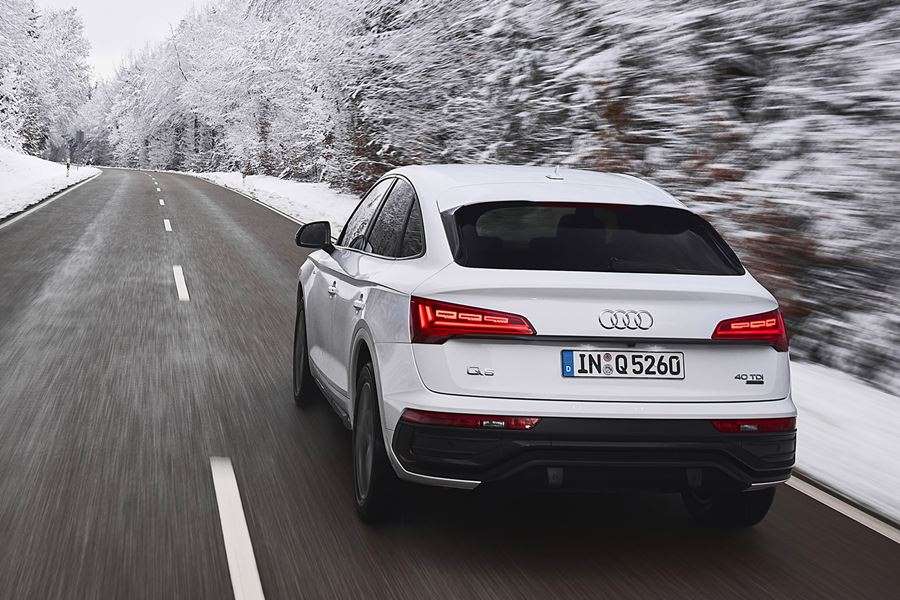
These multi-segment units don't just use a bright, low-power technology (the same technology you'll find in high-end smartphone screens) for shattering the darkness. Different patterns and configurations are possible, with a safety system ensuring your driving-mode signature becomes a full set of illumination as cars approach from behind.
If you thought dynamic indicators had helped Audi stand out on Britain's motorways, this new animated tail-light tech should really grab you. Even without the fancy showcase, OLED lighting is more consistent and even, ensuring that light signature is clear from every angle.
What's under the skin?
There are no surprises here - the Q5 Sportback offers a 2.0-litre diesel or 2.0-litre petrol (more details below). Both are four-cylinder units with 204hp available in the diesel. Diesel models make use of twin-dosing AdBlue selective catalytic reduction (SCR), which in other Volkswagen group cars and vans has proven very successful in reducing real-world NOx output.
Emissions will be further reduced with two plug-in hybrid models when they come on stream later. Care more about performance than your green credentials? There's a diesel-powered SQ5 Sportback too.
Sharing technology with the Q5 means a wide variety of options, including standard, adaptive and air suspension - the latter can raise the car by 45mm for dirt roads, and lowers it by 15mm for improved economy at speed. Steel springs are set up for a sportier feel than the standard Q5, further assisted by optional adaptive dampers and optional dynamic steering. Speaking of options, there are up to 21 different designs of wheel available, from 18- to 21-inches.
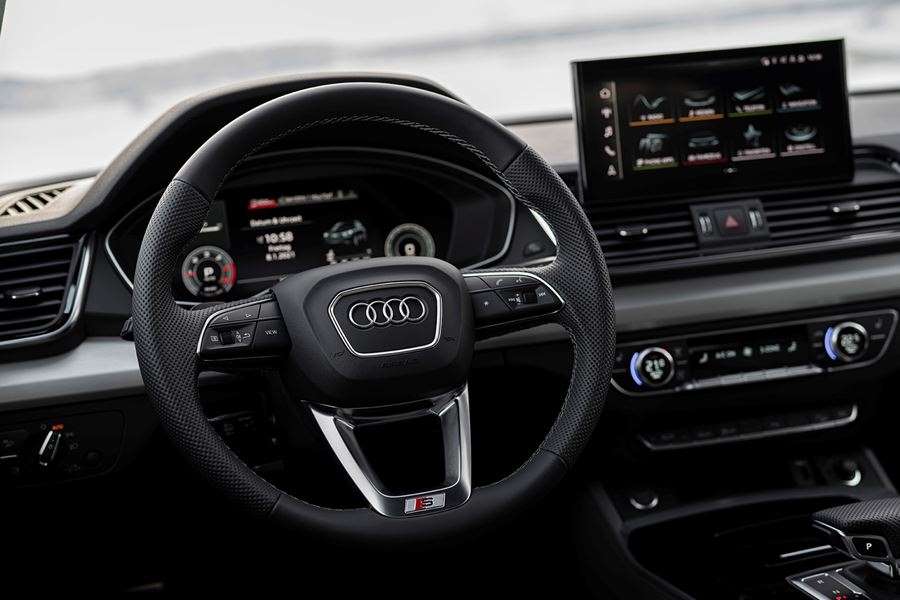
What's it like inside?
Audi's well-regarded MMI - MultiMedia Interface - has been revised and the Q5 Sportback benefits from the latest updates including an infotainment touchscreen with handwriting recognition, improved voice control and comprehensive steering controls.
Mounted in the centre of the dashboard, the main display is 10.1-inches. Ahead of the driver Audi's now-familiar 12.3-inch Virtual Cockpit benefits from the latest developments including hazard warning messages, information about obstructions in the road and traffic-flow awareness to help plan journeys with the least amount of interruptions.
The low-roofed Q5 Sportback is a roomy car and can carry 1,480 litres of cargo with the seats folded. With them raised, the luggage area is 510 litres – on models with the optional bench this can be increased to 570 litres at the expense of rear legroom.
What's it like to drive?
Unsuprisingly, the Q5 Sportback is very similar to drive to its Q5 Cousin. We sampled the range briefly in Germany and can report that it is a refined and effortless cruiser as you'd expect it to be. Sadly, it's not perfect – the V6-powered 50 TDI lacks response away from the lights, and despite e-boost from its mild-hybrid system, it's hesitant to take off, and in busy situations it can feel dreadfully sluggish.
The good news is that the 45 TFSI and 40TDI are not similarly affected. Also, regardless of which engine you choose, there is absolutely nothing wrong with the way these Sportback models handle and ride. On 19-inch wheels, it's stable and planted on the road with unwavering accuracy whatever the surface conditions. In low-grip conditions, the grip and poise is particularly impressive.
The most sporting SQ5 model is very impressive all round, with bags of performance. Despite weighing a portly 2085kg, it will sprint from 0-62mph in 5.1sec from 0-62mph and tops out at a limited 155mph. It's a mild hybrid that can regenerate up to 8kW under braking and will coast with the engine off for up to 40 seconds. Handling and ride are both excellent, too.
Buyers who venture off-road on a regular basis should consider the height-adjustable air suspension together with the side-to-side rear sport differential. Not surprisingly, the air springs also further cushion the ride, lower the body a tad at speed and have the rear end kneel down by 55mm to facilitate loading and unloading.
What models are available?
This is a diesel-centric line-up, at least initially. The model range starts with the 2.0-litre 204hp 40 TDI. Other diesel models will include the 163hp 35 TDI, the 285hp 3.0-litre V6 50 TDI and the mighty 355hp SQ5 Sportback.
There's also a 265hp 2.0-litre four-cylinder turbo petrol engine (the 45 TFSI) – but it will get more interesting (and tax efficient) once the two plug-in hybrids join the range later in 2021. All models have an automatic transmission system, regardless of whether they are front- or four-wheel drive.
Should you buy an Audi Q5 Sportback?
If you're a regular Audi Q5 buyer and fancy something sleeker, here's your next car. It's a class act, mechanically and in terms of fit and finish, but it's not perfect. Although it's a mild hybrid, it feels like a step behind its PHEV rivals and will look old-hat compared with the upcoming all-electric Q6 E-Tron.
We've yet to try it against its immediate rivals, the BMW X6 and Mercedes-Benz GLC Coupe, but the Audi's classy interior and wide range of petrol and diesel engines stand it in good stead – even if it's likely to lag behind the BMW for steering feel and handling.
It's another premium, sporty-looking SUV so you can sit high up, feel safe, and still have a car with more kerbside appeal than a large box on wheels. As it inherits technology and styling from the rest of the Audi A5/Q5 range, it's a known quantity both for reliability and comfort, and for making the right impact on your neightbours when you get it home.
It's more expensive than the car it's based upon and Audi feels its customers will be prepared to pay the premium. The Q5 Sportback is a safe buy, and one that will remain in demand new or used as the UK heads towards the ban on new petrol and diesel car sales, and the SQ5 Sportback is quite a sendoff just as the e-Trons start to take over...
Source: parkers.co.uk
Last goodbye to an era - Cadillac introduced the Blackwing edition of the CT4 and CT5 models
It was summer 2008 when Cadillac appeared with its latest CTS-V sedan on the famous German Nürburgring. With 556 horsepower under the hood, at the end of the day it managed to achieve a time of seven minutes and 59 seconds, which was faster than any serial BMW M5 sedan, Mercedes E63 AMG and Audi RS6 on the planet.
General Motors reminded why Cadillac has long been considered the "world standard" and hinted that it has not forgotten to produce high-performance sedans. Unfortunately, the successes of the sports models from the V family have never been transferred to the rest of the offer, so Cadillac today still lags behind the German competition, as well as Lexus, even in the domestic market.
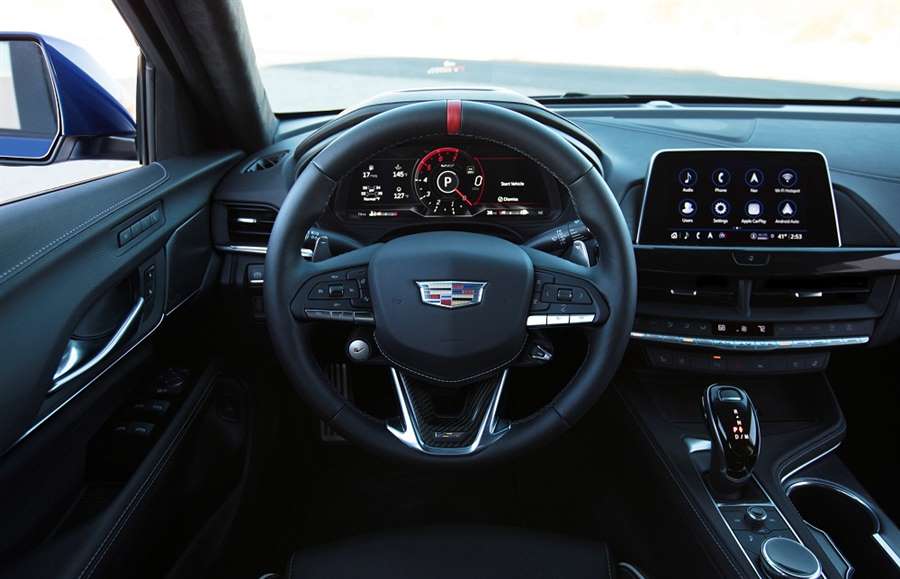
The largest American producer stated a few days ago that its entire offer "across the pond" will be on electricity until 2035. We don't know if Mary Barra really has such plans or maybe she's just "selling the fog" to cash in on her position for a more comfortable pension, but if that's true, we don't have much time left to enjoy high-performance models - at least not. in those using internal combustion engines.
As one last "big goodbye" to the truly fantastic Cadillacs designed by the performance Division V, the company has prepared special editions of the CT4 and CT5 models. But they are not only called "V", as was the case in the past, but Blackwing after the eponymous generation of engines.
The premiere arrived at Daytona’s most famous track where the famous Daytona 24 Hour Endurance Race was run over the weekend. The American team did not manage to win the competition, but they finished in a satisfactory second position after the tire of one of the runners burst, seven minutes before the end.
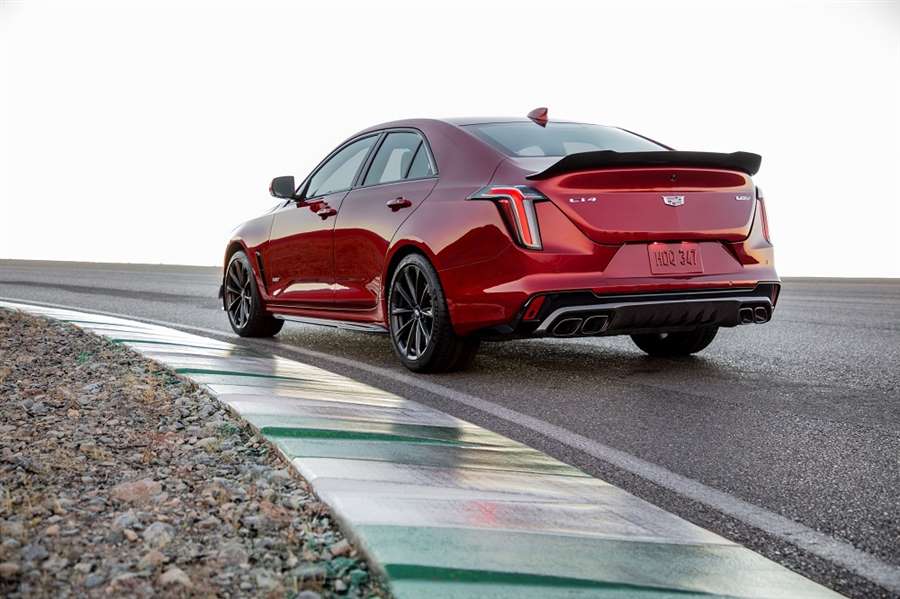
Cadillac told us that these last Cadillacs with SUS engines are high-power, and that in the future they will concentrate only on electric versions.
Let's go in order and let's first pay attention to the smaller CT4-V Blackwing. A replacement for the former much-lauded but poorly-sold ATS model, the CT4 has also not greatly charmed customers. Many will say that the popularity of the crossover is to blame for something like that, and that we can be satisfied that this sedan even exists, but at the end of the day, the ATS and CT4 really do not differ to the extent that Cadillac would like customers to think.
Both cars share an identical 3.6-liter turbo petrol with 472 horsepower and a maximum of 603 Nm of torque. The ATS and CT4 also share a six-speed manual transmission, but the optional ten-speed automatic provides two more gears than was the case before. Cadillac adds that Brembo brakes, 18-inch wheels with Michelin Pilot Sport 4S tires and many aluminum details have also been improved, thanks to which the weight has been reduced by about 30 kilograms. According to the factory data, the acceleration from standstill to 100 km / h occupies a time of 3.8 seconds, while the maximum speed is limited to 304 km / h.
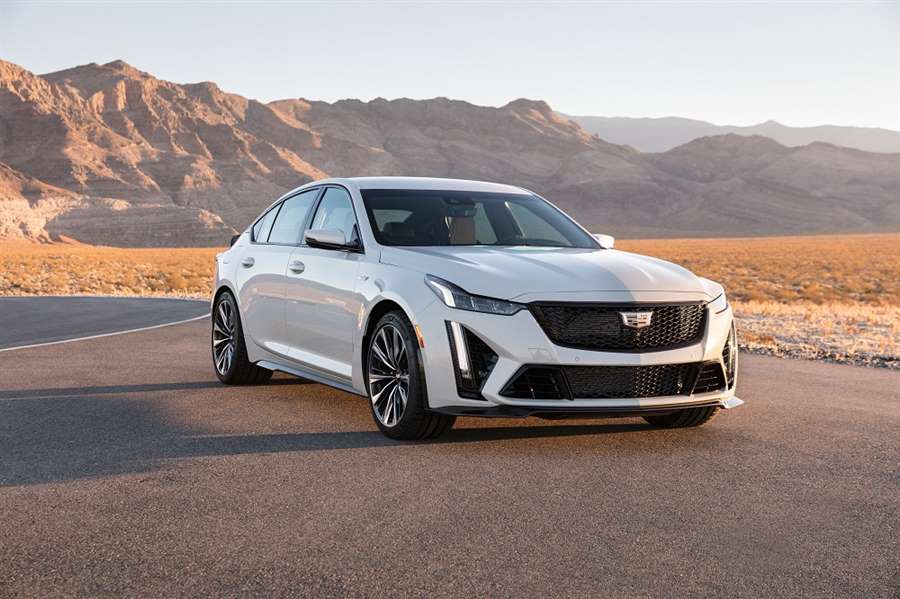
On the design side, the Blackwing does not differ much from the cheaper CT4-V. There are many aerodynamic accessories thanks to which the novelty will be extremely fun to drive on professional tracks, and at least on paper it seems like a sure winner compared to the competition. For example, the Audi RS3 boasts 394 horsepower and acceleration from standstill to 100 km / h in 3.9 seconds, while the Mercedes-AMG CLA45 is eight "horses" weaker and an additional 0.1 seconds slower. However, the CT4 Blackwing costs 59,990 US dollars, which is slightly more than the German competition, and at the end of the day, the rule "as much money as much music" applies.
No matter how impressive CT4 looks, the biggest attention during today in Detroit was drawn by his older brother CT5-V Blackwing. The successor to the legendary CTS, which we mentioned at the beginning of the Prile, now develops as much as 668 horsepower and is the most powerful engine that Cadillac premiered in its 118-year history.
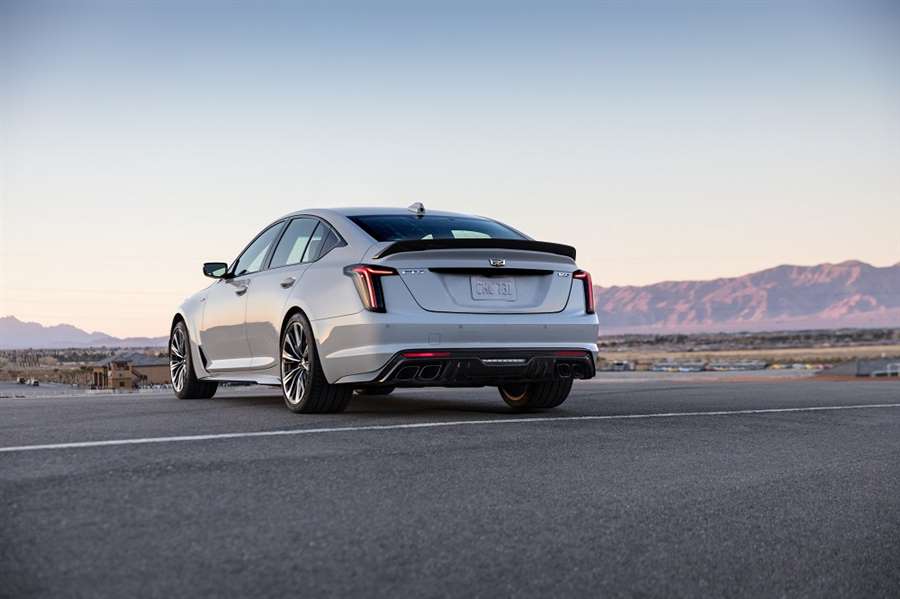
Let's start with the best part, and he is hiding under the hood. There is a new generation of "eights" under the code number LS, and this time the volume is 6.2 liters. Paired with a compressor, this unit not only develops 668 "heads" but also a maximum of 893 Nm of torque. It is also the fastest Cadillac to ever get off the production line with acceleration from zero to 100 km / h in 3.7 seconds and a top speed of around 200 mph (320 km / h).
What is even more impressive is the fact that General Motors has found a way to provide a manual transmission that would withstand such torque, and in this case it has six gears. However, Cadillac notes that if owners want to get the aforementioned performance, they will have to choose a ten-speed automatic transmission, as the manual one will be slightly slower.
Similar to the smaller CT4-V, this Blackwing also brings 19-inch wheels, Brembo brakes, sports tires and a number of suspension modifications. American cars have a reputation for being fast only in direction, but the CT5-V could break the record at the Nurburgring, which is in force among four-door production sedans.
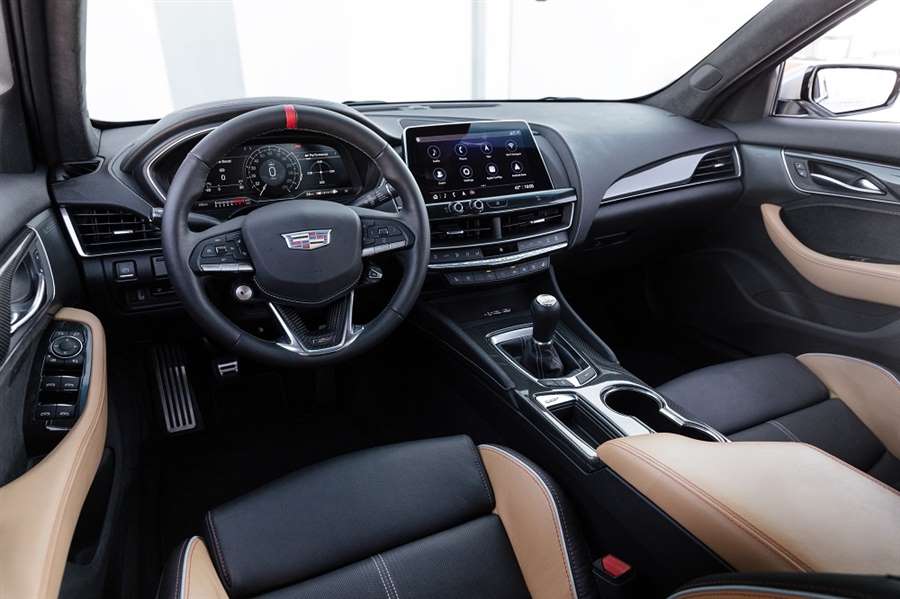
Also, we must mention that the Cadillac did not overdo it with the design changes, and this Blackwing looks like what the Americans call a "sleeper", that is, a "sleepy" car. This term is used for four-wheelers where attention is paid to mechanics, while in style they look like any other car on the track or on the road, whatever.
With the exception of the rims, four exhaust manifolds and a few badges, the Blackwing won’t set it apart too much from any other CT5 model. The starting price of 84,990 smallest greenbacks is over 20,000 "greenbacks" more modest than the one demanded by German competition such as the BMW M5 and the Mercedes-AMG E63.
Needless to say, BMW and Mercedes are significantly faster on the road as the Cadillac’s mass of over two tons is by no means in its favor.
At the end of the day, let’s enjoy the end of an era that we will all surely miss one day. The future electric Cadillacs will certainly be more powerful and faster, but we will, one hundred percent know, miss the smell of gasoline and the thunder of V8 engines…
2021 Lexus RC350 F Sport First Drive: Coupe'd Up Like the Rest Of Us
This luxurious two-door is showing its age, but it’s still a rewarding car for people who love to drive.
The Lexus RC coupe, like the recently updated-for-2021 Lexus IS sedan, has been around for some time, first going on sale in 2015 and receiving a major face-lift in 2018. It doesn't have too many competitors. Sporty luxury coupes aren't nearly as popular as upscale SUVs these days, leaving the Lexus battling three primary competitors: the BMW 2 Series, the Infiniti Q60, and the Audi A5. Within that bunch, The RC is the only one to offer a naturally aspirated engine, and as a result, it falls somewhat awkwardly between rivals that use turbocharged four-cylinder powerplants and those with mightier turbocharged V-6 engines.
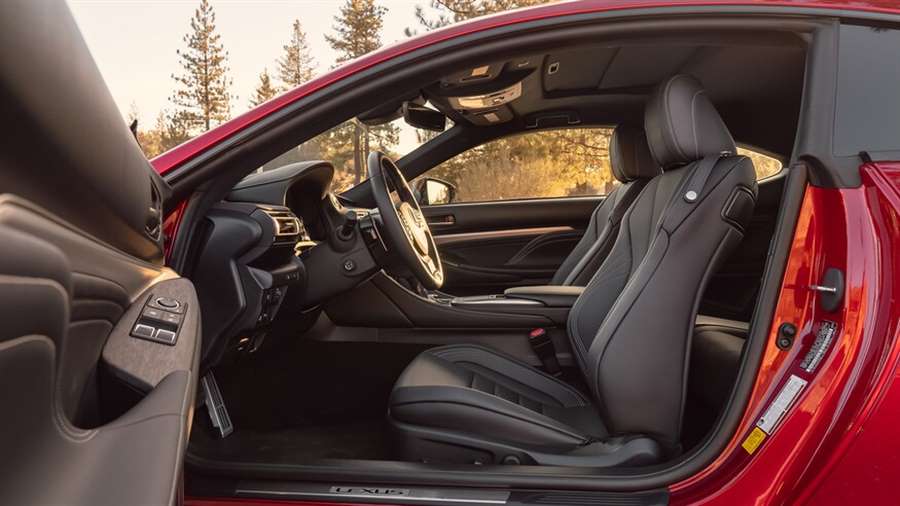
We got our hands on an example of the midrange 2021 Lexus RC350 F Sport, which sits above the entry-level RC300 and below the muscular RC F. Over the span of two weeks, we attacked canyon roads, climbed mountains, and took on some heady freeway mileage to see if the RC has the goods to impress as it nears its twilight years.
Natural Aspirator
It packs a 311-hp V-6 engine that produces 280 lb-ft of torque. An eight-speed automatic transmission handles gear changes and sends power to the rear wheels in this guise, though an all-wheel-drive variant is available. The engine sounds great, and shifts come quickly, crisply, and accurately. It's one of the rare naturally aspirated powerplants still on sale; revving it out for all its worth is enjoyable, and doing so is met with a great exhaust note.
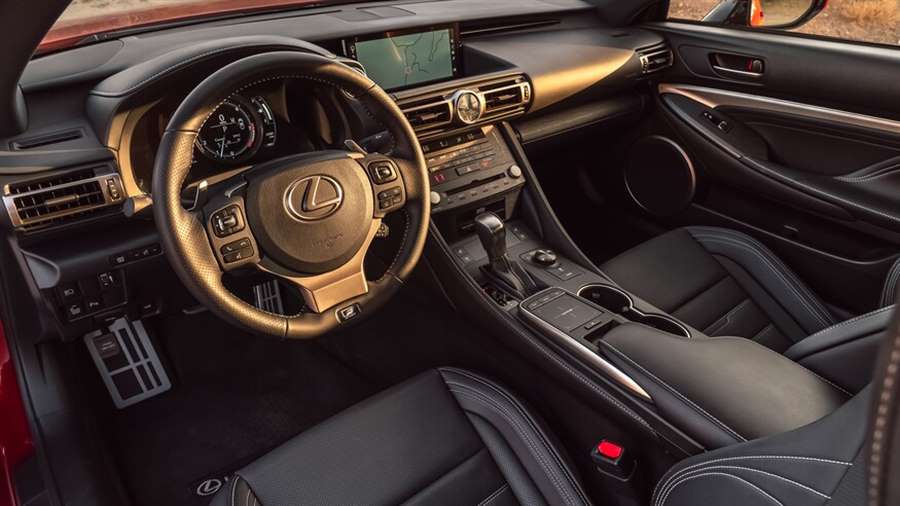
Maybe I've gotten used to the spindle grille, but the Lexus RC still looks sharp to me all these years later, even if I'm in the minority. Our car came with Metallic Infrared paint, a premium color for an additional $595, accented with additional orange F Sport brake calipers ($300). There's very little chrome on the exterior, just one strip on each side mirror, which should help prevent this car from looking dated for years to come. Otherwise, dark gunmetal gray trims the rest of the vehicle, endowing it with a mature, serious look. The power moonroof, which also helps brighten up the black and gray cabin, added another $1,100 to the total sum.
On the open road, the RC350 F Sport serves as a GT-lite. It's not nearly as powerful as its big brother, the gorgeous and capable LC500, but its adaptive F Sport suspension does a great job soaking up road imperfection in the Normal drive mode and stiffens up for better body control when set to Sport S or Sport S+ mode. Although the throttle and brake pedals provide direct and predictable feel, the V-6 doesn't quite provide enough grunt to match its sporty aesthetic.
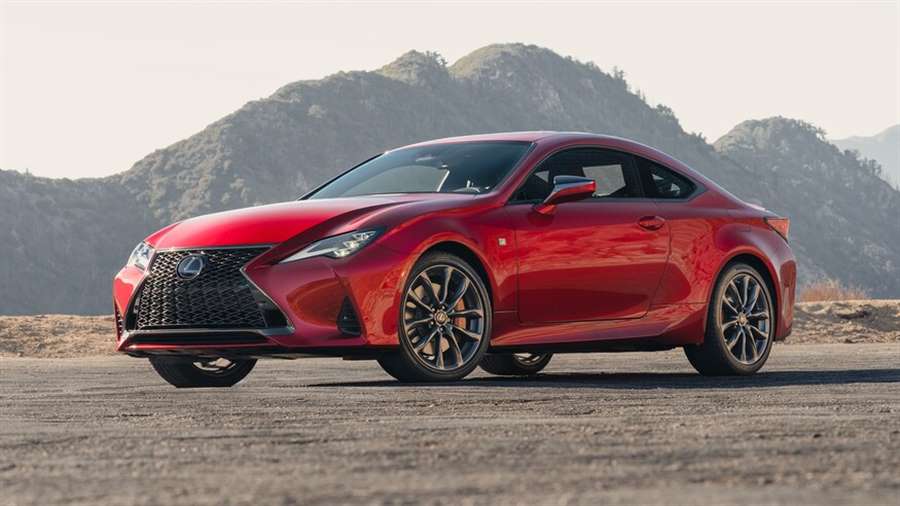
In addition to the RC not being quite as quick as it feels like it should be, fuel economy isn't too impressive, either. The EPA rates the RC350 F Sport at 20/28 mpg city/highway. Drivers who like to zip off of the line can expect those numbers to dip to old-school muscle-car digits if they aren't careful. This is partially because this Lexus tips the scales just shy of two tons. So even though it's nimble, its heftiness hurts at the pump and the dragstrip.
This prevailing sense of predictability prevents the RC350 F Sport from offering true excitement. The engine, though it provides decent power at the top end of the rev range, doesn't quite have the torque to make launches or on-ramp runs exhilarating. At best, it brought a smirk to my face as I navigated tricky roads with ease and evoked some utterances of surprise that a midrange Lexus coupe handled so well without any drama whatsoever. It simply complies with the driver's wishes. For some folks, that's all they want in a car, and I get the appeal of that characteristic.
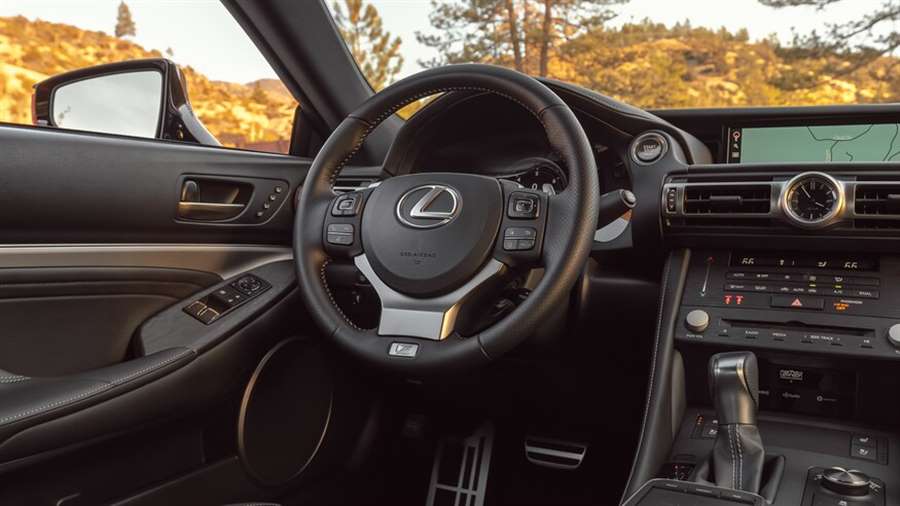
F-Ing Well Equipped
Our car came equipped with a smattering of options, most notably the Lexus Dynamic Handling package with dynamic rear steering and variable-gear ratio steering ($1,900), which helped the coupe handle with impressive poise on winding roads. The steering feels direct, gives good feedback, and is tuned well for navigating technical routes. A Torsen limited-slip differential ($390) also helped up our test car's handling. It even rode on summer tires, which had plenty of grip for brisk jaunts on our favorite roads.
Interior amenities are typical Lexus: a somewhat anachronistic user interface (saved in part by Apple CarPlay/Android Auto) and excellent materials and build quality. The leather seats were comfortable on the long haul and supportive when I took advantage of the car's great handling characteristics on fun roads. The transmission tunnel is pretty large and eats into the cockpit space, and there aren't a ton of storage cubbies, but then again, this is a compact coupe, not a bulbous crossover, so this detraction might not be a penalty for buyers expecting a cocoon-like cockpit. Trunk space is plentiful for a pair of travelers who don't like to travel light.
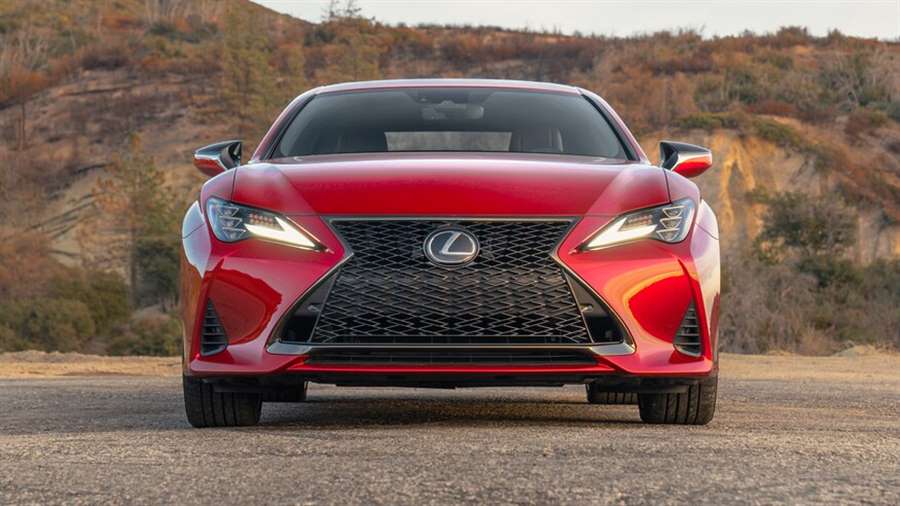
Good Deal Or No Deal
Other cool features on our test car include the triple-beam LED headlights ($1,160), a package that bundles in-car navigation and the Mark Levinson audio package ($2,725), and the Intuitive Parking Assist sensor package ($500). In all, our model we tested, almost $10,000 more than the $50,645 starting price for the RWD RC350 F Sport test car topped $60,000. Its performance lies in between the trim levels and engines of its competitors, but its starting price is more closely aligned with higher performance cars such as the Audi S5, which starts at $53,545 and has a more powerful turbocharged V-6 engine.
The RC350 F Sport is fun to drive without offering paradigm-shifting acceleration or speed. It's comfortable both physically and in the manner it performs. Those looking for more excitement should opt for the full-hog RC F. However, for dependable, luxurious transportation that can still provide driving joy when there are fun roads to explore, the RC350 F Sport is worth considering.
2020 Lexus RC350 F Sport Pros
Crisp, striking bodywork
Well-made and luxurious interior
Performance upgrades that add impressive capability
2020 Lexus RC350 F Sport Cons
Not as quick as we'd like
Poor fuel economy
Antiquated infotainment system and subpar track pad
Source: motortrend.com
Sales of refreshed Mazda CX-5 started in Europe
The Japanese manufacturer has slightly redesigned an important member of the Mazda family - the CX-5 SUV. Sales in Europe have started, and the price in Great Britain is around 27,000 pounds.
The Mazda CX-5 was first unveiled in 2012 and was the first to embrace the Kodo design language and Skyactive technology.
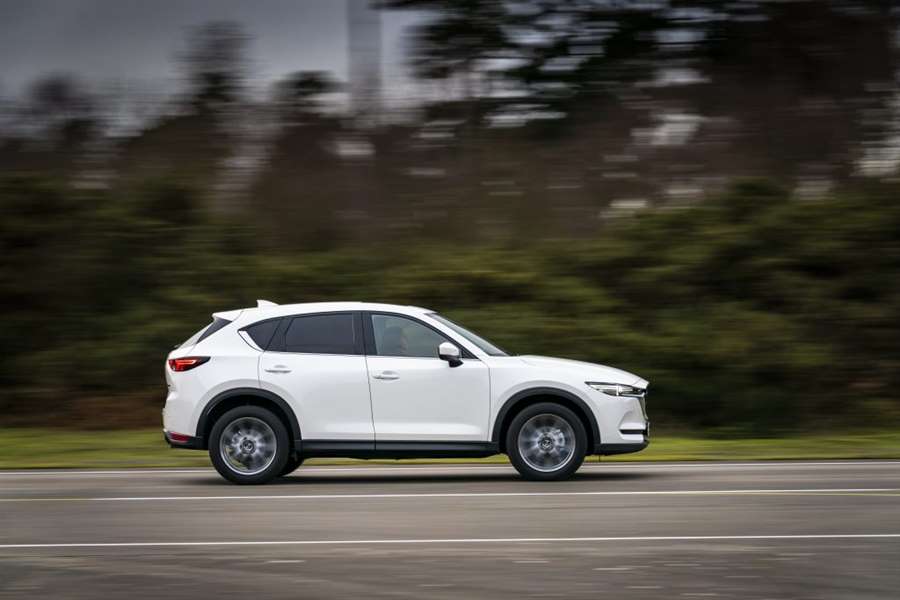
So far, 490,870 Mazda CX-5s have been sold in Europe, but still much more is sought outside the Old Continent, so globally that number is as much as 3.1 million, which makes this SUV the best-selling Mazda model.
An upgraded version of Mazda's mid-size SUV, the CX-5, brings innovations in technology, improved driving dynamics, and reduced CO2 emissions.
Engines and transmissions have also undergone slight improvements, so, among other things, the 2.2-liter Skyactive-D diesel engine with 184 hp is now offered for the first time with front-wheel drive.
The CX-5 also arrived in some markets in Europe in a version with a 2.5-liter Skyactive-G petrol engine of 195 hp, and there is a standard two-liter with 165 hp, which is offered with both front and 4 × 4 drive.
Changes to the engines have resulted in a cleaner and more dynamic ride, so, for example, the accelerator pedal has been optimized, which is now more responsive than before, then the engine, but also the six-speed automatic transmission.
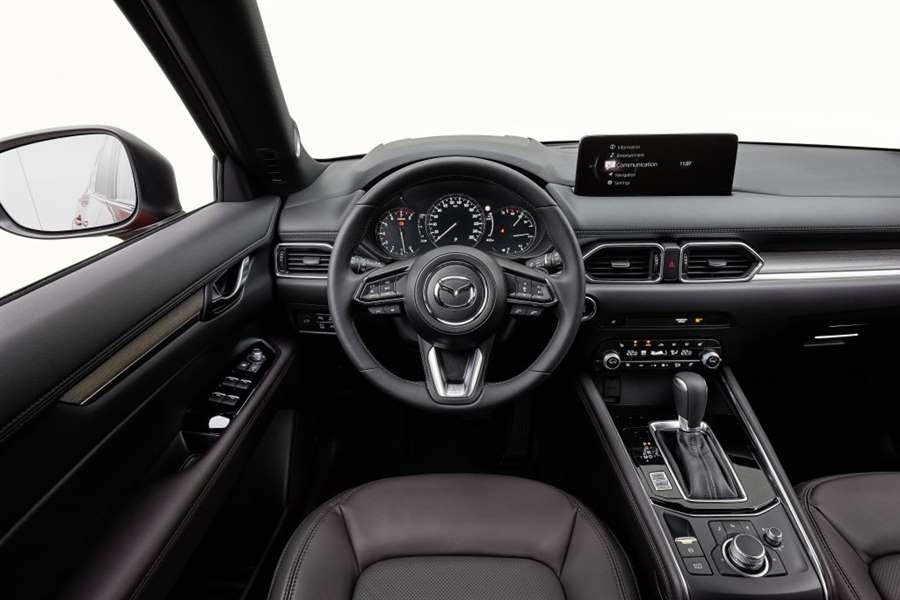
Now this SUV is also equipped with an improved HMI infotainment system, which is displayed on a larger 10.25-inch display, faster response and a cleaner display than before. Controller handling has also been improved, and new connectivity options for the Mazda app have been introduced.
In addition to the restyled CX-5, Mazda also offers a special edition of this SUV to mark the brand's 100th anniversary, called the Homura.
In Japanese, the word means flame, and this version differs from the standard ones by special black details of the exterior and interior, as well as 19-inch wheels.
Introduced Cadillac CT4-V Blackwing and CT5-V Blackwing
Cadillac has also officially unveiled the Blackwing versions of the CT4-V and CT5-V sports sedans, the announcement of which we saw last weekend.
In short, cars have a more aggressive front end with larger air vents, aero body kit (front spoiler, sills, trunk spoiler ...), new alloy wheels (18 inches in CT4-V and 19 inches in CT5-V), digital instruments, leather sports steering wheel, as well as optional carbon fiber front seats (on the CT5-V Blackwing).
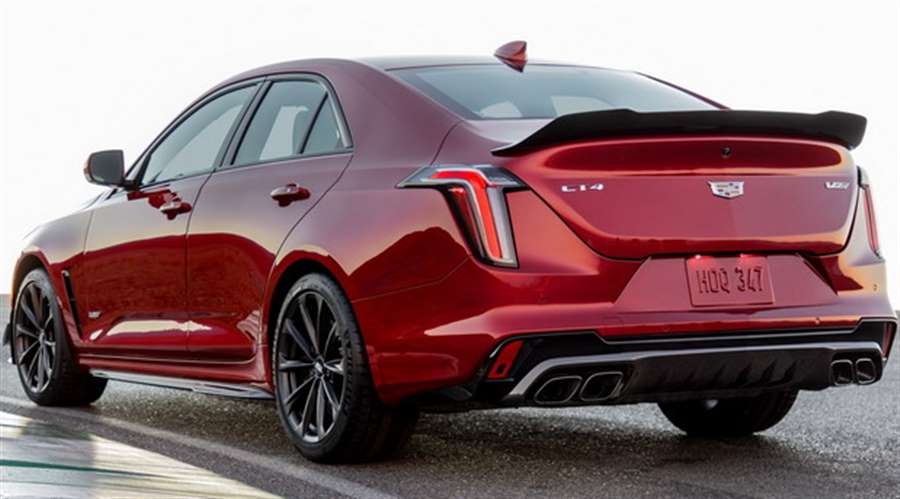
The CT4-V Blackwing is powered by a 3.6-liter twin-turbo V6 engine with 352 kW / 479hp and 603 Nm of torque, acceleration from 0 to 60 mph (96 km / h) is 3.8 seconds, while the maximum speed 304 km / h.
The model comes standard with a 6-speed manual transmission, but a 10-speed automatic will also be offered as an option.
The package for the CT4-V Blackwing also includes an electronic rear LSD differential, Brembo brakes with 381 mm front discs, an optional carbon fiber aerodynamic package, an AKG audio system with 14 speakers, an 8.0-inch infotainment system, a 12.0-inch digital instrument panel. .
Prices for the CT4-V Blackwing in the US start at $ 59,990.
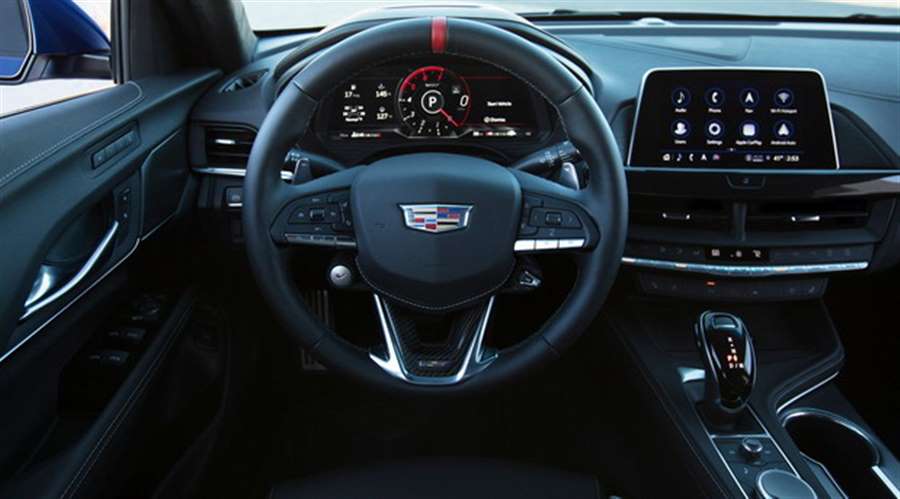
The CT5-V Blackwing under the hood has a 6.2-liter V8 with a compressor developing 498 kW / 677HP and 893 Nm of torque (which is enough for a top speed of 322 km / h and acceleration to 96 km / h in 3.7 seconds) .
Here, too, a 6-speed manual transmission is available as standard, and a 10-speed automatic transmission as an option.
For CT5-V Blackwing, Cadillac has provided rear-wheel drive, electronic rear LSD differential, Brembo brakes with 398 mm front discs, optional carbon-ceramic brakes, 12.0-inch digital instrument panel, 10.0-inch infotainment system, 15-speaker audio system, head -up display, Surround Vision system with recording function ...
In terms of price, the CT5-V Blackwing costs $ 84,990 in the US market.
Nissan Ariya first details
Stylish electric Nissan is packed with tech and goes up to 310 miles
Nissan's second electric car has been unveiled and is due to go on sale in the UK by the end of 2021. The Ariya is an electric SUV that slots between the Nissan Qashqai and Nissan X-Trail in terms of size. It comes with two or all-wheel drive, up to 310-miles of battery range, and two levels of power.
It's Nissan's second electric car after the hugely popular Nissan Leaf. More importantly for buyers, it ushers in a new design language for Nissan. In the metal it looks brilliantly solid and futuristic, while inside it's a step up from what you'd find in a Nissan today.
Main rivals include already established electric cars like the Kia e-Niro and Jaguar I-Pace, as well as upstarts like the Ford Mustang Mach-E, BMW iX3 and VW ID.4.
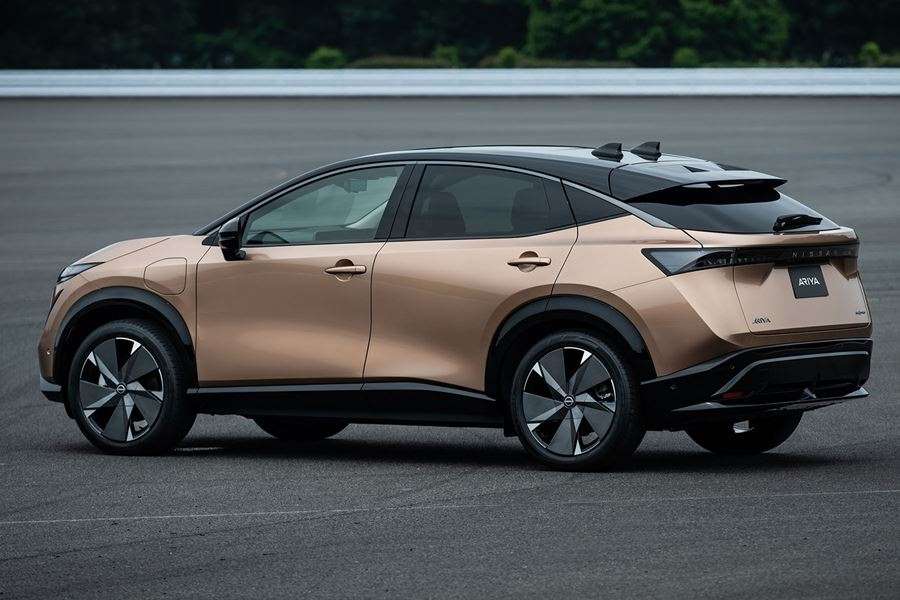
What's it like inside?
As you'd expect, it's bristling with the latest tech. You get a 12.3-inch central touchscreen alongside a 12.3-inch digital display for the driver, and a colour head-up display. There is a suite of driver assistance systems, including an enhanced version of the Leaf’s excellent ProPilot system semi-autonomous adaptive cruise control, with lane-keeping assistance and Nissan’s Safety Shield active safety systems.
The Ariya gets a new 'hey Nissan' voice control system as well as Alexa voice functionality. There's also a Nissan smartphone app to check battery status and set the climate control remotely as you can in many of its electric rivals.
Nissan says that it has the room of a much larger car inside, and this is down to the space efficiency of an electric car, which does not need to house the bulky engine and gearbox in the usual place.
It's a smart new look
The Ariya is certainly more stylish than the Leaf. There are ultra-slim LED headlights upfront, with a contrasting light blade at the rear. It gets animated indicators, two-tone paint schemes and sits on striking large wheels. The design was previewed in 2019 in a concept car – also called the Ariya – and much has remained unchanged going into production.
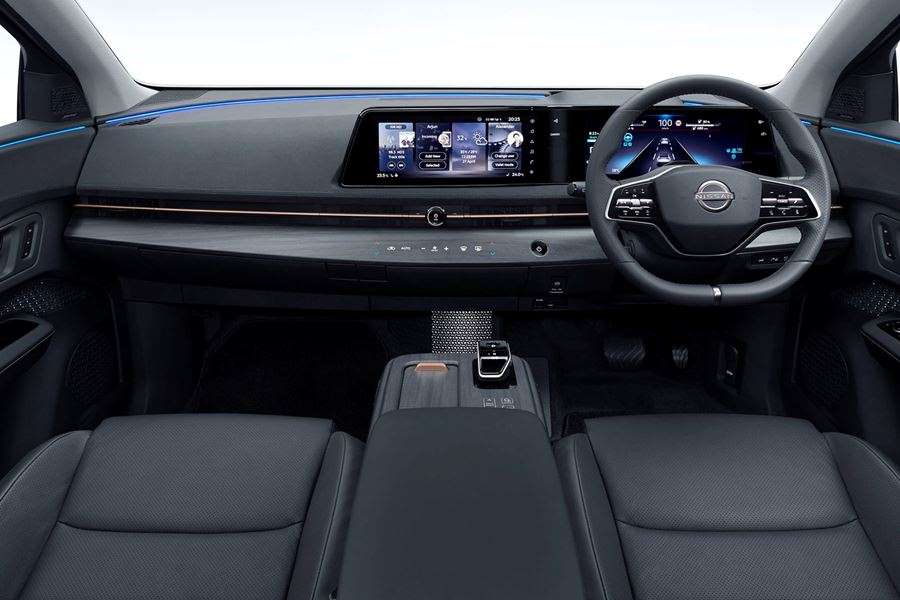
It has a long wheelbase (the distance between the axle lines), which should deliver that promised extra room inside. It's about the same length as an X-Trail, but the wheelbase is more than 7cm longer.
Performance and range – very competitive
The Ariya comes with the choice of two- or four-wheel drive, and will be offered with two power and torque outputs. The entry-level front-wheel drive 63kWh Ariya develops 220hp and 300Nm for a maximum speed of 99mph and a 0-62mph time of 7.5 seconds. Nissan says that this version will have a 233-mile range in real-world WLTP testing. The version with the larger 87kWh battery pack delivers 245bhp with the front-drive motor, and this one covers up to 310 miles on a single charge.
The four-wheel drive versions use what Nissan calls its e-4orce system. With the 63kWh battery pack you get 275hp for a 0-62mph time of 5.9 seconds and a range of up to 211 miles. The 87kWh four-wheel drive model boasts 310hp and 285 miles of range.
Star of the show will be the range-topping Ariya 87kWh Performance model. You get 395hp and 600Nm of torque for a 0-62mph time of 5.1 seconds. Maximum speed is 124mph. Battery range for the Performance model drops to 248 miles.
Charging options
The 63kWh Ariyas get a 7kW charger for home connections and the the 87kWh versions come with a 22kW three-phase set-up, where the home set-up can deliver this. The good news is that it uses the latest CCS charger set-up, and can support the fastest public charging, with up to 130kW.
Source: parkers.co.uk
Volkswagen has opened a plant for recycling car batteries
Volkswagen's Group Components division has opened its first plant to deal exclusively with car battery recycling.
The plant is located in the German city of Salzgitter and has started a recycling pilot project. The goal of the project is to take old lithium-ion batteries used in cars and extract useful raw materials such as lithium, nickel, manganese and cobalt, and to extract aluminum, copper and plastic. In this way, in the ideal scenario, up to 90% of all battery components could be recycled.
Only car batteries that can no longer be used for any other purpose will be recycled in this plant. Namely, during this kind of ecological care, an analysis will be conducted. It will show whether the used battery is still capable of providing enough voltage for its "second life" in long-term energy storage systems, mobile vehicle charging stations and the like. If the analysis shows that the battery is no longer suitable for that, it will be sent for recycling to Salzgitter.
For now, as part of the pilot project, it is possible to recycle up to 3,600 batteries from electric cars a year in this plant. As e-vehicles gain in representation, so will the recycling drive, designed so that its capacity can be increased. Only by the end of this decade, they say from Volkswagen, will the recycling of batteries be carried out in significant quantities here.
What is important for this process is that it is in line with the environmental goals of the Volkswagen Group. VW plans to thoroughly discharge the batteries in the recycling process and disassemble them into their component parts. They are then ground into granules and dried, resulting in the so-called. "black powder" - composed of lithium, nickel, manganese, cobalt and graphite. These elements are separated from the powder by chemical hydrometallurgical processes, dissolution in water and chemicals, which will be carried out by several partners for Volkswagen.
In the end, raw materials for the production of new battery cathodes will be obtained from valuable materials from old batteries. VW calculates that by using recycled materials and renewable energy sources when making a new average car battery, with a capacity of 62 kWh, it will save 1.3 tons of CO2 that will not end up in the atmosphere.
Author: SEEbiz / Bug.hr

